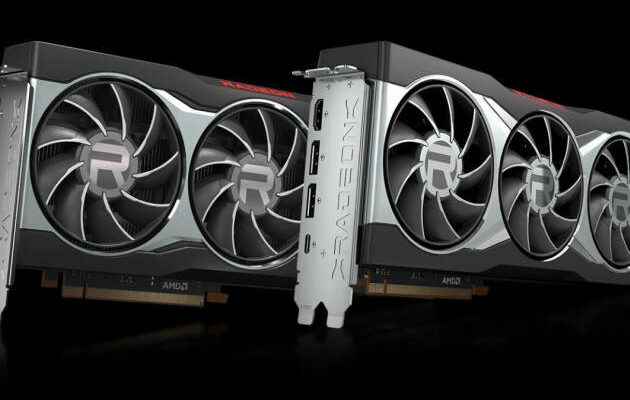With the plummeting of cryptocurrencies, that of the profitability of GPUs in their mining, the arrival of new generations of GPUs as well as the arrival of Intel in the graphics segment, the pressure on graphics cards is coming down again… and with it, the price. And so the margins of GPU designers like AMD.
In recent months, AMD and Nvidia have had nothing to do to sell GPUs: the real difficulty was to produce and deliver. If bottlenecks remain – shortage of power components from China (partly contained), shipping cost, etc. – prices fall mechanically and as people re-equip (often for several years), demand for consort falls.
Read also: FSR 2.0, AMD’s upscaling technology will (also) benefit Xbox Series… and Nvidia GPUs (2022)
This is why AMD is relaunching its operation to offer games in bundles Radeon Raise the game “. One-off operations that include coupons to activate games (Steam, EA, etc.) or services (Xbox Game Pass). And thus keep the price of the cards a little higher. AMD buying the licenses in bulk much cheaper than the official prices, the chip designer and its partners grant themselves an additional margin while the consumer accesses games for less… as long as the titles appeal to him! For the time being, the Ars Technica article indeed speaks of Saints Row (2022) and Sniper Elite 5which are unlikely to make you dream…
Will we ever go back to “normal”?
If the drop is real, prices haven’t returned to where they started: a Radeon RX6800XT announced at $649 in December 2020 is still $900. Prices nevertheless already more acceptable than the $1500 that this kind of card could reach. If this drop is felt much more in the USA (market more homogeneous and competitive than the European) with prices already up to 300 € lower on an RX6800 XT, the trend should soon affect the “old continent”.
However, the question of a return to “normal” arises. As a reminder, the RX 6800, 6800 XT and 6900 XT had been launched at $579, $649 and $999 and the RTX 3070, RTX 3080 and RTX 3090 at $499, $699 and $1499. However, even after the drop, prices are still at least 30% higher in the USA. And with nodes more and more complex and expensive manufacturing processes for the GPU itself (soon to be 5 nm for AMD and Intel), and the higher peripheral costs previously mentioned (transport, components, etc.), the return to pre-2020 prices seems difficult to foresee in the near future.
Also see video:
Also see video:
It will be necessary to see if the arrival of 5 million additional GPUs on the market (Intel) and the bringing online of future factories of TSMC, Samsung and Intel will succeed in relaunching the production lines of semiconductors downwards. But at often more than 20 billion per plant, an agreement, even informal between the various players, could limit the spiral of falling prices.
Source : AnandTech
